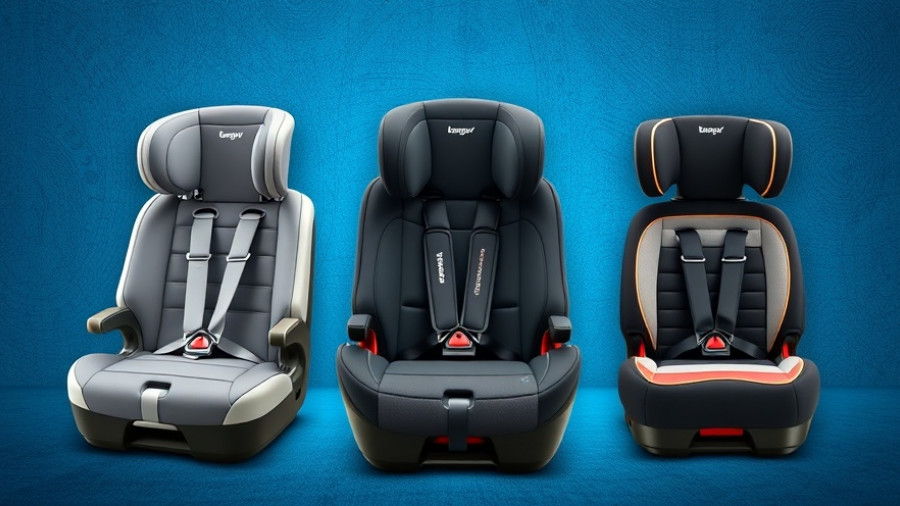
Understanding the Importance of Booster Seats for Children
As children grow, ensuring their safety in vehicles becomes a priority for parents and caregivers. Booster seats serve as a crucial transition between a car seat and a standard seat belt, offering proper elevation for kids to utilize the car's safety features effectively. These seats not only enhance comfort during travel but also significantly reduce the risk of injury in the event of an accident, reinforcing the need for informed decisions when selecting the right booster seat.
Different Types of Booster Seats and Their Benefits
There are primarily two types of booster seats: high-back and backless. High-back boosters provide added head and neck support, making them ideal for vehicles lacking adequate headrests. On the other hand, backless boosters are more portable and convenient, especially for travel, but lack the additional support of their high-back counterparts. Understanding these differences is essential for choosing the right seat based on your child's age, size, and specific needs.
Choosing the Best Booster Car Seats: Our Top Picks
When it comes to selecting the best booster seats, several top-rated options shine through our extensive research. The Chicco KidFit ClearTex Plus stands out as our top high-back recommendation due to its versatility and ease of use, converting seamlessly from high-back to backless mode. The Graco TurboBooster LX also garners attention for its user-friendly design, although it features some compromises compared to our top pick.
For bigger kids, the Diono Monterey 2XT Latch emerges as an excellent choice, known for its comfort and adjustable width, allowing for a better fit as your child grows. Meanwhile, for those seeking a reliable backless option, the Chicco GoFit Plus delivers exceptional ease of installation with its SuperCinch LATCH system.
Safety Standards and Practical Insights for Parents
Every booster seat assessed undergoes rigorous safety testing, evaluating fit and ease of use across various vehicles. According to the National Highway Traffic Safety Administration, children typically transition from forward-facing car seats to booster seats around ages 4 to 7, and should remain in booster seats until they are big enough for adult seat belts, usually between ages 8 and 12. Remember, even after switching to a seat belt, children should continue to sit in the back seat for optimal safety.
Making Informed Decisions for Child Safety on the Road
Selecting the right booster seat is integral to ensuring your child's safety in the car. Transitioning properly between different car seat stages minimizes injury risk and promotes safety compliance. Understanding the types, features, and recommended practices allows parents to make the best choices for their families.
With so many options available, take the time to read reviews, consult safety ratings, and assess your child’s needs. Ultimately, the best booster seat is one that fits well in your vehicle, buckles securely, and provides adequate support for your growing child. For more detailed insights and to explore our top booster seat recommendations, continue learning from industry experts and trusted resources.
 Add Row
Add Row  Add
Add 




Write A Comment